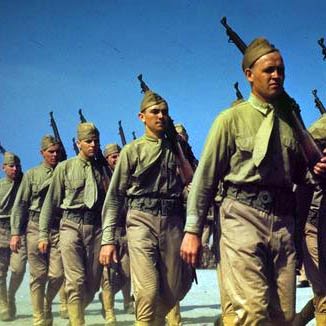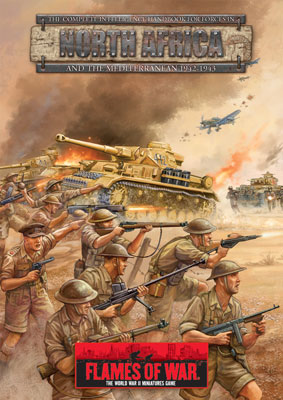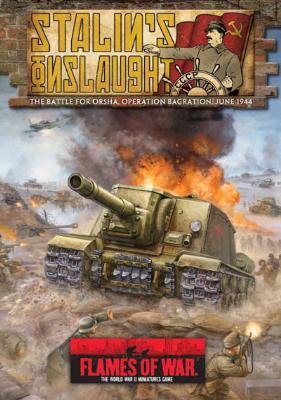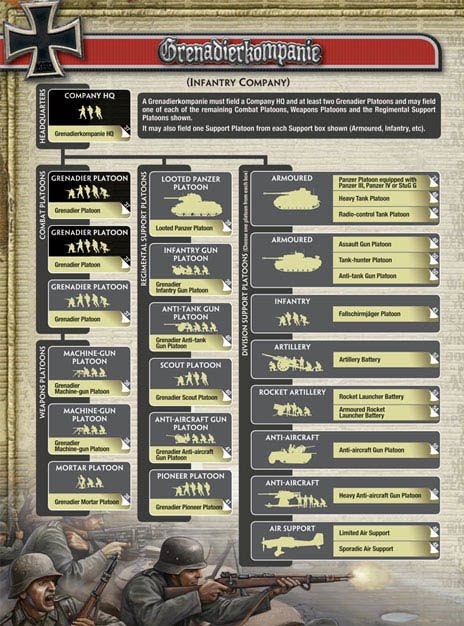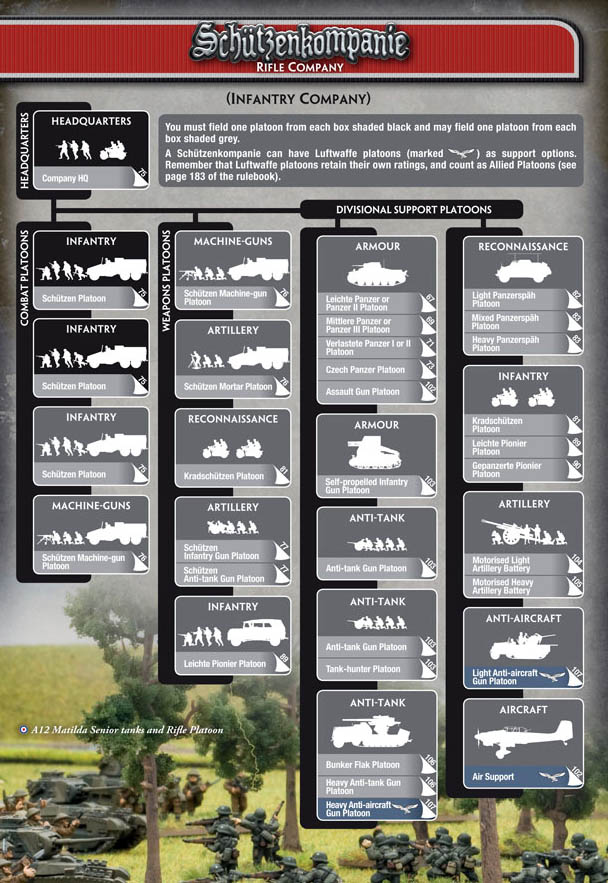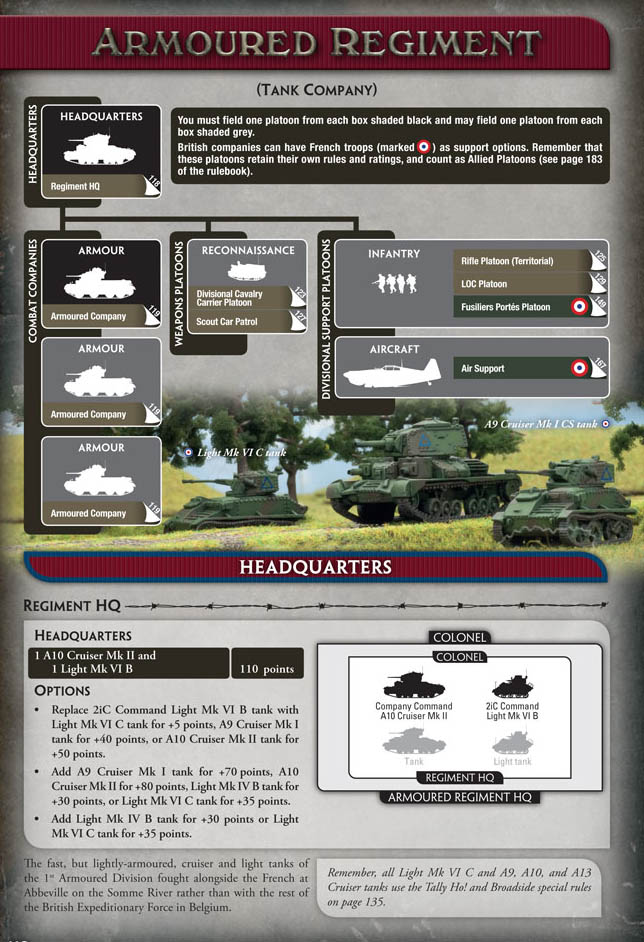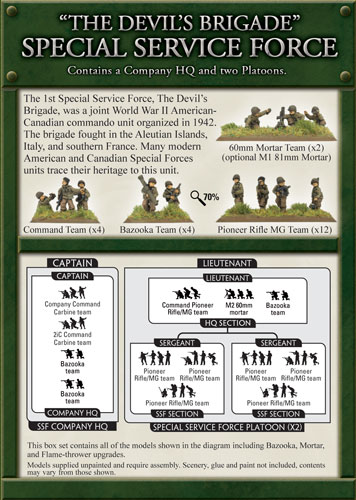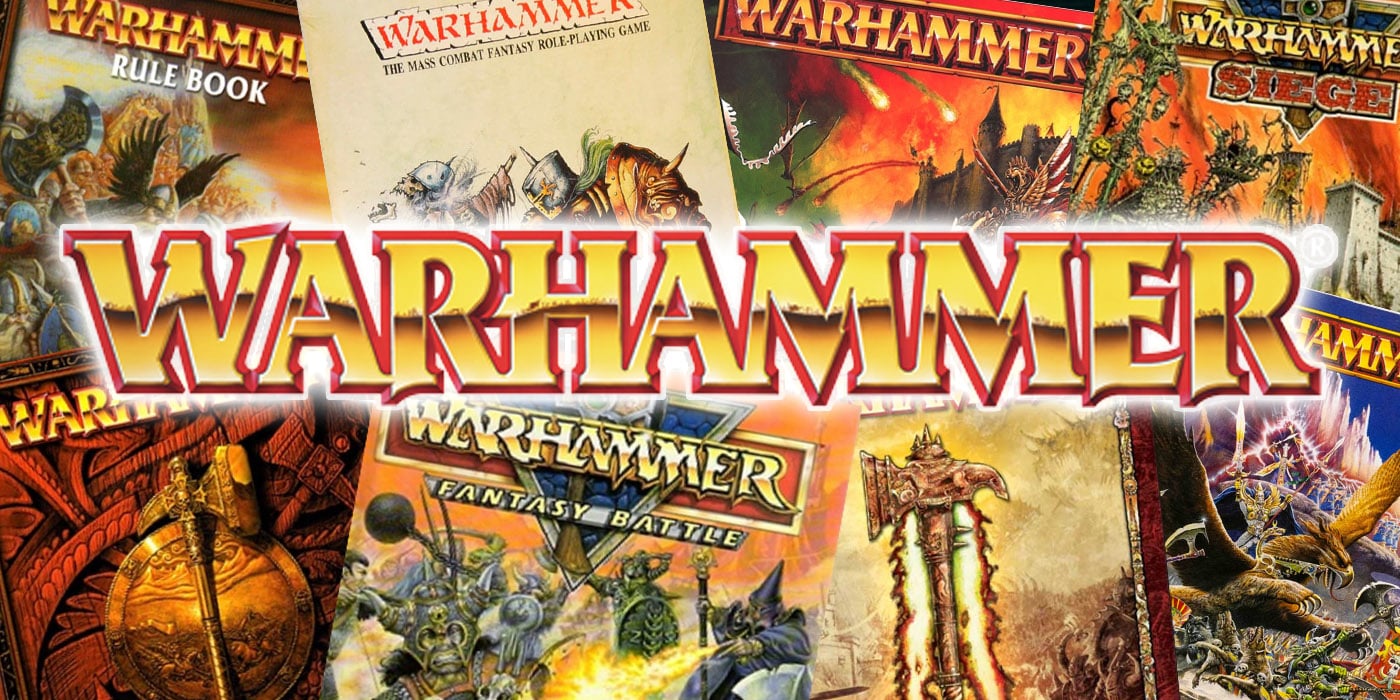FoW Primer: How to Make a List

Eusebius Rex here, I was invited by BoLS to write a few articles about Flames of War Battle and Intelligence Handbooks.
Both are ‘codex’ like books detailing army lists for factions to be used in Battlefront Miniature’s Flames of War game system, but Intelligence Handbooks are large tomes that cover a whole front of World War II while Battlebooks will cover specific battle, operations or campaigns of the War.
A while back, I was an Intel Analyst in an OB (Order of Battle) shop doing battlefield intelligence work. Assessing the enemy’s unit’s organization, weapons, equipment and doctrine was something I really enjoyed doing and so I like looking at the different lists in Flames of War with that same skill set. Before I start posting detailed analysis (INTSUM: Intel Summary) of FoW books and the capabilities/ weapons of the units entailed, I want to make sure our new and prospective FoW players understand how to use the books to make an army list.
FoW books use an easy echelon column/ platoon option block style to offer choices for players to build their army lists – typically referred to as a company. Mandatory units are typically in blackened boxes and may allow you only one type of unit while optional units have their boxes ‘grayed’ and may list several units that can be taken as that box option.
Echelon columns are divided into company asset (Combat and Weapons Options), then Regimental Support and then finally Division Support assets. There are multiple platoon option boxes along each column and although you may choose assets from any column to get to your list’s prescribed point limit, you can only take one platoon (chosen from several sub-box options) for each box. Occasionally, special units will have specific guidance on which options to choose from or other special considerations in order to make list more historic and so they will use unit crest to show these requirements.
Notice the Heavy Anti-Arcraft Gun Platoon has a Luftwaffe badge next to it as an option – these are Allied troops according to FoW rules and so are not eligible for company commander morale check rerolls.
Your HQ consist of a commander and then typically a 2iC (2nd in charge) and HQ assets that are organic to the company and attachable to any Combat or Weapons platoon. The CO and 2iC are independent teams and may join any platoons in the company or attached as support to it but will have limited function with allied platoons. Combat Platoons are typically a 2+ requirement and so most companies of any type will always start off with an HQ + 2 Combat Platoons similar to a 40K company. Supporting assets from the Weapons Platoons, Regimental and Division support platoons are then chosen by deducting their points from your total at will.
Soviet lists in FoW are typically 2-3 times the number of stands and/or vehicles that other factions are able to bring to the table at similar point levels. A Soviet army list is called a battalion where it would normally be referred to as a company and its sub units are companies instead of mere platoons.
There is a page number corresponding to each unit option to guide you to the cost and the model/ equipment specific for that unit.
Often, there are several ways of fielding a platoon – for instance, an American Rifle platoon with 2 or 3 squads – and so the point cost for either option is given accordingly. Below the units cost may be even more optional teams that can be added to the unit no matter its size. In a company HQ, these optional teams are typically HQ teams that are able to be combat attached to your Combat or Weapons platoons for added firepower. The platoon diagram is very important to building your list as it shows how many teams that unit will literally be able to field (minus any options not paid for in points, of course). It also shows a model count for figures or vehicles in the platoon and tells you exactly what equipment is being used. The equipment traits – range, rate of fire, anti-tank rating, firepower, ect – are then broken down by team type (infantry, gun, transport or tank) at the end of the parent faction’s army lists entries for quick reference and game definition.
Each Special Service Force Platoon has a stand of figures for each team in its platoon diagram. The number of figure silhouette in the diagram helps you determine how many figures and weapons they use from this box set to glue on a stand while building out your army.
Many of Battlefront’s miniatures are easily adaptable from one lists to the next and although there are typically blisters and/or box sets for every unit depicted in the army list, if there isn’t a model or figure for the team you want, blisters are easily kit bashed or simply painted/ modeled in a way to depict the troops you need for your lists. My German Grenadiers (Foot Infantry) have been lucky enough to be used as PanzerGrenadiers (Mech Infantry in trucks), Gepanzerte PanzerGrenadiers (Mech Infantry in armored half-tracks) and even GebirgsJaeger (Mountain Infantry)!
Flames of War is a very diverse game with it comes to army lists available. There are typically thousands of points in choices available to most FoW company types and with most US games fought at 1500-1750 points, there are a lot of different ways to build a list. New players often have so many choices that it is completely overwhelming to choose that first company to build or even faction to play! The best advice I can give is to pick a company that can take units that you like the look of because FoW is definitely a ‘General>list’ game and although not all companies have the same learning curve they all look really good on a Flames of War battlefield.
Veterans, let’s hear your advice on making a good list – faction specific or agnostic. What’s important to you when you buy a specific team or platoon blister? What advice do you have for players just coming into FoW from other games and how do you think the options in FoW compare as far as play style is concerned?
New or prospective FoW players – what brought you to FoW or what faction do you find most interesting?

